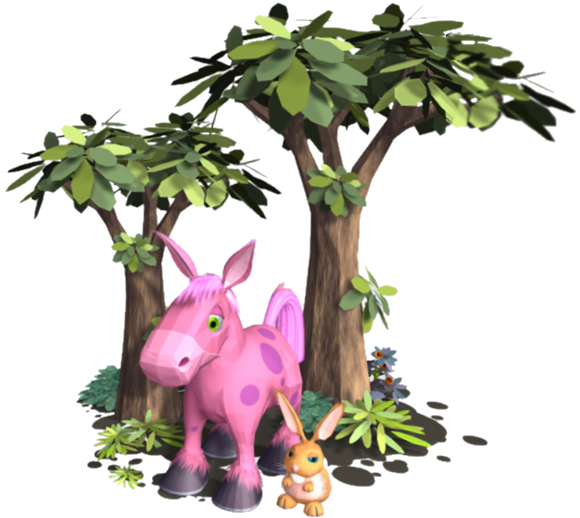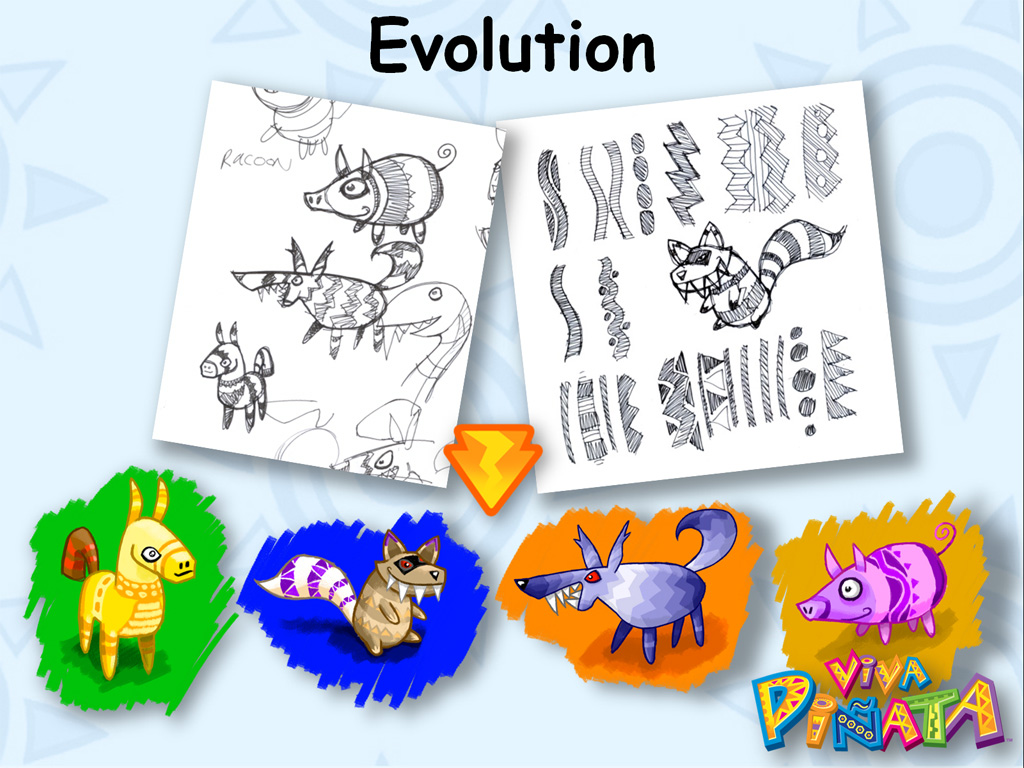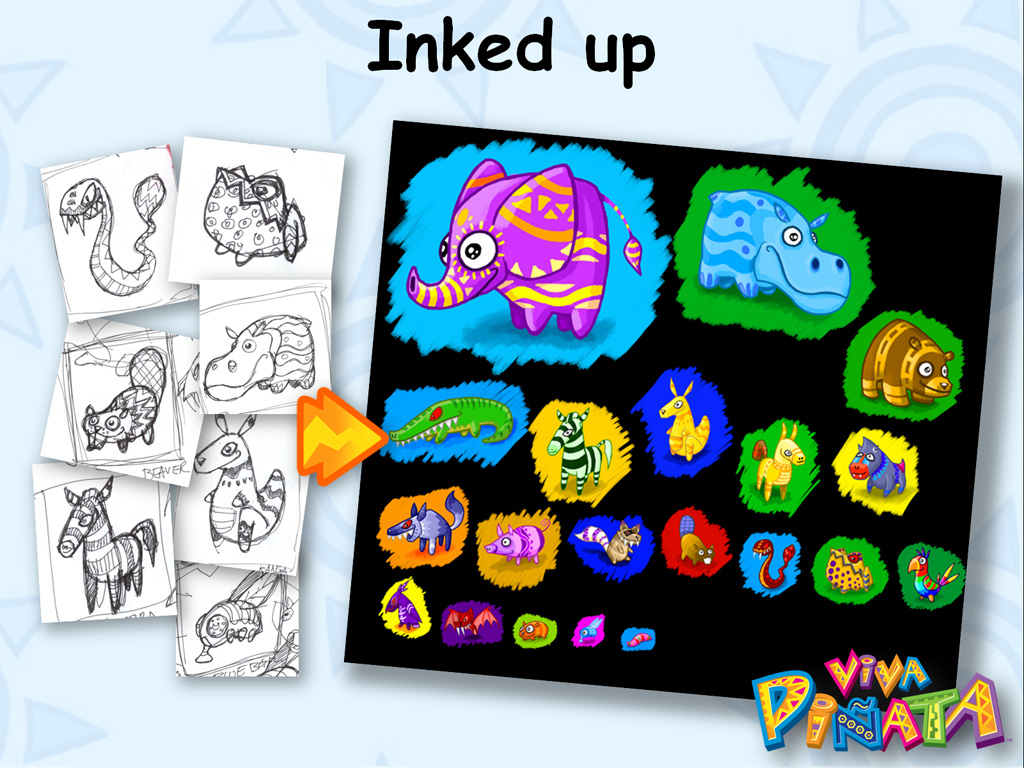Rare Roots: The Making of Viva Piñata

Navigation:
Part One: Origins
Part Two: Evolution
Part Three: Outsiders
Part Four: Offspring
Part Five: Moving On
Part Two: Evolution
Not fully happy with his pastel creations, concept artist Ryan took a step back and began drawing inspiration from many places. He looked at ancient cave paintings with their simplified shapes, Aboriginal patterns and the art found in Aztec culture.
He then progressed to looking at the Mexican Day of the Dead festival with all the associated costumes and bright colours. At this point memories of childhood were sparked, and visions of piñatas gave him an idea.
 [View Original Full-size Image]
[View Original Full-size Image]
So the Piñatas were born, with their own look: something different, something new. These Piñatas were made up of strong and simple shapes decorated with bright, distinctive patterns. If someone were to create a new species of Piñata today, these rules would still have to be followed so that every one maintains the same look and feel.
Flanking the group you see above are the Ponocky and the Rashberry, both pretty much unchanged from early drawings. The central two, however, are both Sours, but you wouldn’t recognise them as such by today’s standards. Rather than having red and black coats, Sours were initially differentiated from their milder cousins by their darker patterns, pointy teeth and angry red eyes.
We started with over 160 creatures, and Ryan lovingly crafted and coloured each one numerous times to come up with the final image they deserved.
 [View Original Full-size Image]
[View Original Full-size Image]
Again, you can see that the Chippo and Elephanilla (top row) have hardly changed, whereas the Fizzlybear has had a new paint job. The Mallowolf (lower left) has even changed shape since the last slide, showing how much we wanted to perfect these bundles of joy even at this stage.
Some of the initial batch have, of course, hit the cutting room floor due to various reasons, but you can still see them peeking out from this style sheet. The rattlesnake can be seen in both sketch and final form, accompanied by the cane toad and hamster. Most creepy, however, is the original Whirlm. Hidden at the bottom of the sheet, it actually has no eyes.